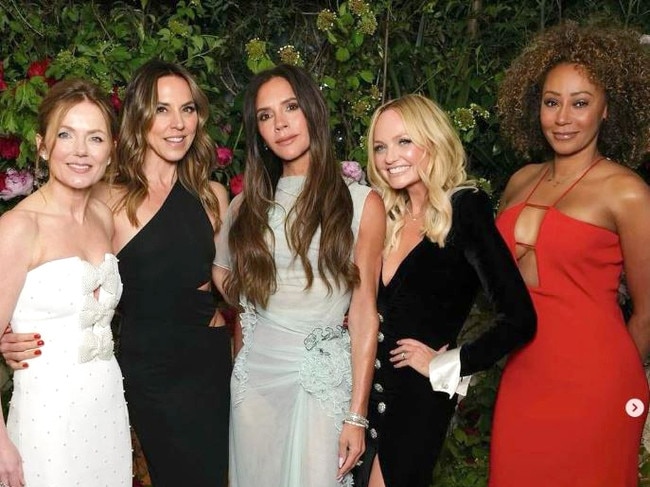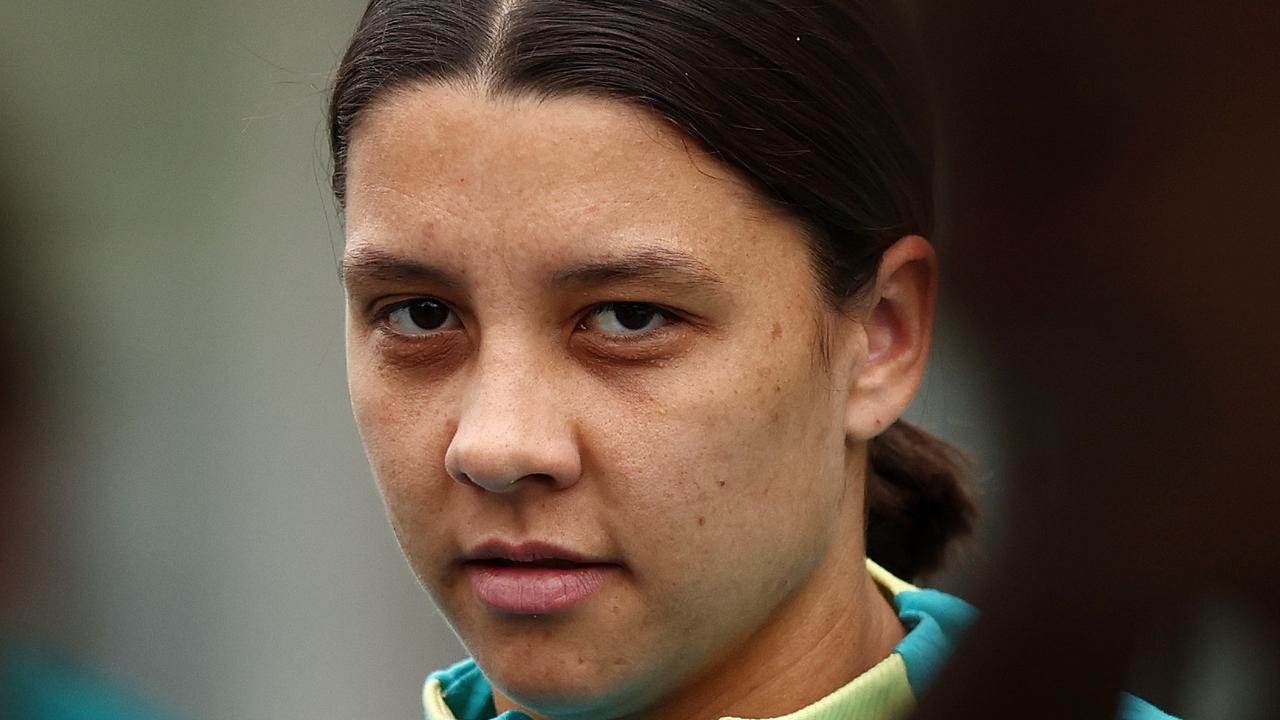Angela Mollard: Spice up your life girls and make superpowers unique
The Spice Girls brief reunion at Victoria Beckham’s 50th reminds us of a time when chutzpah rather than curated Insta images was a currency, and to be young and alive was the most fun in the world, writes Angela Mollard.
Opinion
Don't miss out on the headlines from Opinion. Followed categories will be added to My News.
It’s amusing what the take-outs have been on the Spice Girls reuniting at Victoria Beckham’s 50th birthday party.
Having waded through the commentary on a) how great it was to see them singing together; b) why Victoria’s daughter-in-law Nicola wasn’t there (she was with her grandmother); and c) how you, too, can look as good at 50 (money, people, money), I’ve come to the conclusion that everyone has overlooked the main point.
Actually, there’s two main points.
Firstly, they’re all still here. For an industry over-represented in the premature death statistics, it’s notable that Melanie Chisholm, Geri Halliwell, Emma Bunton, Melanie Brown and Victoria are still alive and kicking even if the latter is suffering from a foot injury and had to be carried out of the party by husband David. But what really struck me in the 12-second video of them singing and dancing to their 1997 hit Stop was the memory of what these five mismatched, variously talented, gobby, gutsy yet relatable girls once stood for.

Sure, they represented “girl power”, that fist-pumping, pre #MeToo brand of poster-palatable feminism. But more than that, their reunion reminds us how good it was to be a young woman at the end of the last century before social media stole our souls, Botox froze our faces and a myriad beauty and body expectations left us in a permanent state of dissatisfaction. They are no longer Baby, Sporty, Ginger, Scary and Posh but those monikers transport us back to a time when chutzpah rather than curated Instagram images was a currency, diversity was important but not orchestrated, and to be young and alive was the most fun in the world.
The Spice Girls were not the best singers. They weren’t even the best dancers. But their friendship, catchy tunes and boldness both captured and brought the curtain down on a century that had changed women’s lives like never before.
Like Carrie, Samantha, Miranda and Charlotte in Sex and the City, the Spice Girls represented all of us. They made it OK to have strong thighs, red hair, a curly afro, a doll-like face or defined abdominal muscles. And in an era before social media became a tool that stoked comparison and discontent, the Spice Girls owned the characteristics that made them different. I loved them.
They may have been brought together by marketing men – beating off 400 other wanabees to claim a spot in the band – but they asserted themselves. Geri famously pinched the then Prince Charles on the bottom and refused to wear a “boring” outfit at the 1997 Brit Awards, opting for the iconic Union Jack minidress instead. If The Spice Girls represented the end of the analog age with its home phones, CDs and concertgoers watching with their eyes rather than through mobile phone screens, they were also emblematic of a fin de siècle confidence and optimism. To be a young woman in the ’90s was the best. The freedoms fought for in the ’70s had been cemented, the ’80s working girl ethos with its Amazonian stiletto and shoulder pad combo had faded and the ’90s represented grit and assertiveness. Face fakery and filters had yet to be born. What you saw was what you got, but for the enhancement afforded by platform shoes and the upholstered wizardry that was the Wonderbra. Girls will always form cliques but what we were taught by these five ordinary girls riding the wave of globalisation was that you could be any spice in the rack.
How different it is now. As the “clean girl aesthetic” swamps social media and threatens to turn everyone into the same pilates-honed, Dyson Airwrapped, glowy-skinned version of modern womanhood, I yearn for a kickass Sporty Spice or that self-professed “little street rat” Ginger.
Today’s young women are identikits of one another with their oversized blazers, Samba sneakers, and slicked-back hair (or, when time allows, Matilda Djerf-inspired “blowouts”). What’s more the 12-year-olds are already following in their footsteps, aping each other in their White Fox sweatshirts and Sephora habits. If TikTok and Instagram have democratised fame they’ve also killed off genuine self-expression and imagination. They may even have killed off happiness if mental health stats are any indicator. Social media is George Orwell’s groupthink, only with prettier pictures. The Spice Girls made difference a superpower. As Mel Chisholm, currently on a DJ tour of Australia, once explained, they were “pretty bland” when they started.
“We felt like we had to fit into a mold,” she said. “And then we realised that we were quite different ... to each other and to all the female groups in the past. We also realised there was a lot of strength in that.”
Thirty years later, the quintet hasn’t escaped misery what with cheating husbands, eating disorders, abusive partners and money mismanagement, but they’re gutsy survivors. Spice, it seems, is not just for a season, it’s for life.
Got a news tip? Email weekendtele@news.com.au
More Coverage
Originally published as Angela Mollard: Spice up your life girls and make superpowers unique




